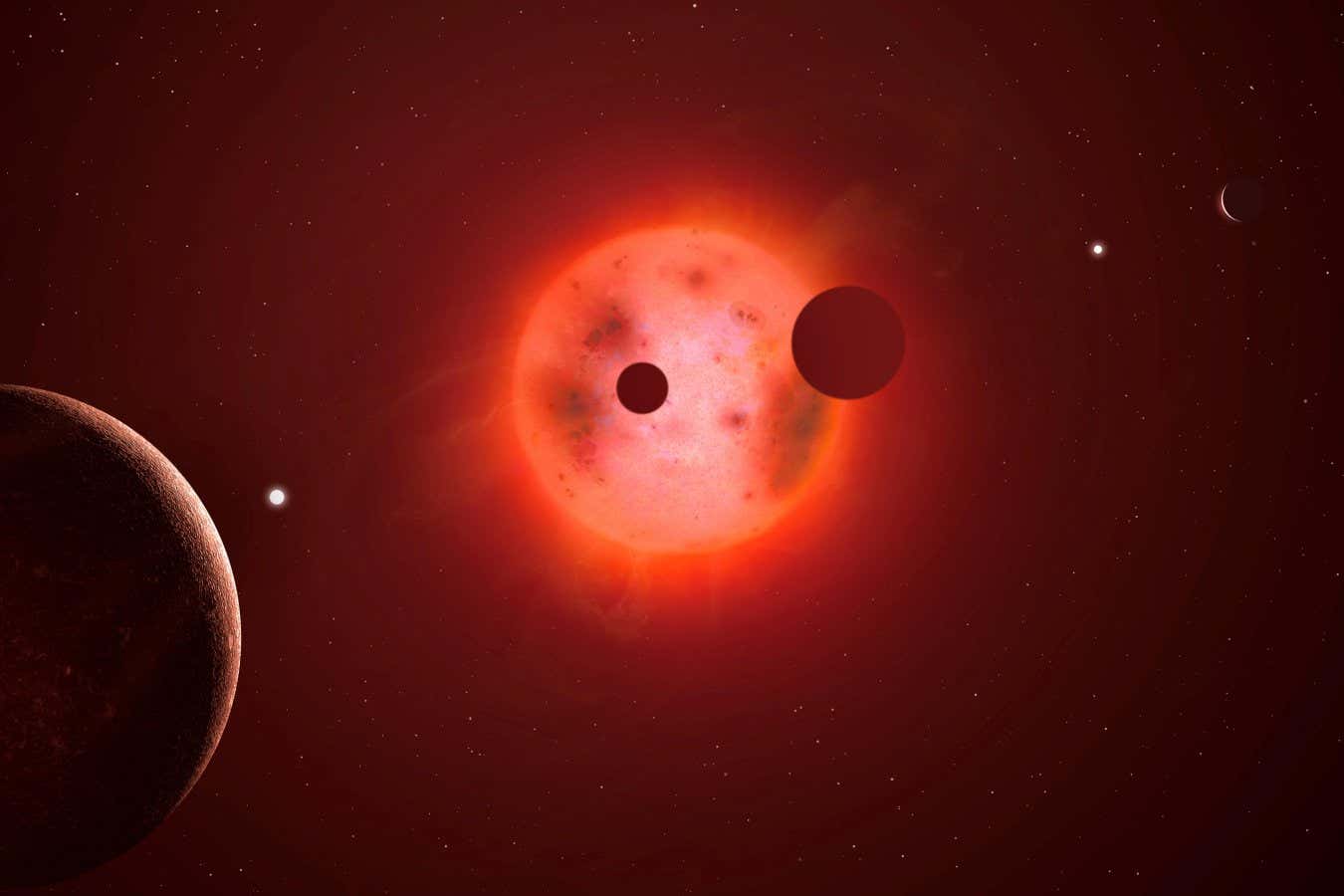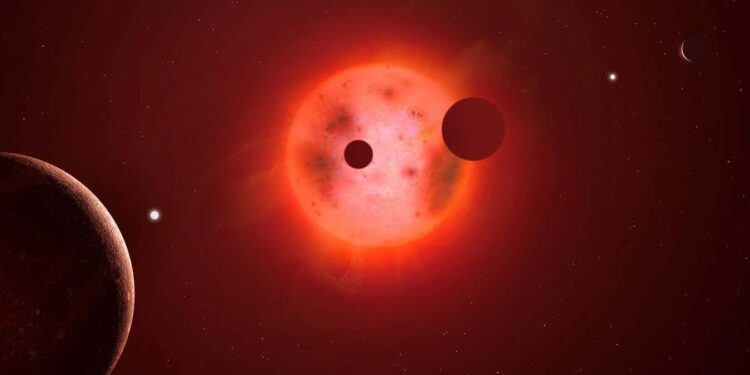
Illustration of TRAPPIST-1, a red-dwarf star with at least seven orbiting planets
Mark Garlick/Alamy
The search for atmospheres around the TRAPPIST-1 star system, one of the most promising locations for life elsewhere in the galaxy, might be even more difficult than astronomers first thought because of short-lived radiation blasts from the star.
TRAPPIST-1, first discovered in 2016, is a small red dwarf star about 40 light years from Earth with at least seven planets orbiting it. It is a prime target for astronomers hoping to detect extraterrestrial life because several of its planets appear to sit in a habitable zone where temperatures are just right for liquid water.
But in order to support life, those planets would have to retain atmospheres. So far, extensive observations with the James Webb Space Telescope have failed to find evidence of atmospheres on any of the planets.
Now, Julien de Wit at the Massachusetts Institute of Technology and his colleagues have detected microflares coming from the TRAPPIST-1 star every hour or so that last for several minutes. These tiny bursts of radiation appear to interfere with our ability to observe the light that passes through the planets’ atmospheres – if they exist – thwarting the main method of detecting what chemicals might be in any atmospheres.
Using the Hubble Space Telescope, de Wit and his team looked for a specific wavelength of ultraviolet light coming from TRAPPIST-1 that is absorbed by hydrogen. If they saw less of this light than expected when a planet passed in front of the star, then it might have suggested hydrogen leaking from the planet’s atmosphere.
They didn’t find any signs of this, but they did find significant variability between different observations, suggesting that extra light was coming from somewhere at certain times. Because the Hubble data can be broken up into 5-minute chunks, they could see the extra light was very short-lived. De Wit and his team say the source must be microflares – bursts of radiation from the star, like the solar flares on our sun but more frequent.
The TRAPPIST-1 star is extremely faint, meaning that astronomers need to observe it for a long time to collect enough light. “On top of that, there is this flaring activity, on a timescale that’s relevant to the timescales of transiting planets,” says de Wit. “It seems like it’s really very difficult to get to say anything truly informative about the presence of [atmospheres on the exoplanets],” says de Wit.
He and his colleagues also calculated whether these flares could affect the planets’ ability to hold on to atmospheres. One planet, TRAPPIST-1b, on which the James Webb Space Telescope had already failed to find evidence of an atmosphere, could be losing the equivalent of 1000 times all the hydrogen in Earth’s oceans roughly every million years, they found. However, there are still a lot of unknowns and a wide range of different scenarios, says de Wit, partly because we don’t know how many of these flares are actually hitting the planets.
Stars like this can have a range of activity levels, but it seems as if TRAPPIST-1 might be towards the more active side of this range, says Ekaterina Ilin at the Netherlands Institute for Radio Astronomy. “It’s not like it’s an absolutely unexpected, otherworldly result; it’s just kind of bad luck. It’s more active than we hoped it would be,” she says. “In a way, it’s genuinely new to see these flares, or what we at least interpret as this, if they are what they think they are. It might be one of the first instances in a star that small.”
Topics:
Source link : https://www.newscientist.com/article/2485408-stellar-flares-may-hamper-search-for-life-in-promising-star-system/?utm_campaign=RSS%7CNSNS&utm_source=NSNS&utm_medium=RSS&utm_content=home
Author :
Publish date : 2025-06-23 14:00:00
Copyright for syndicated content belongs to the linked Source.







